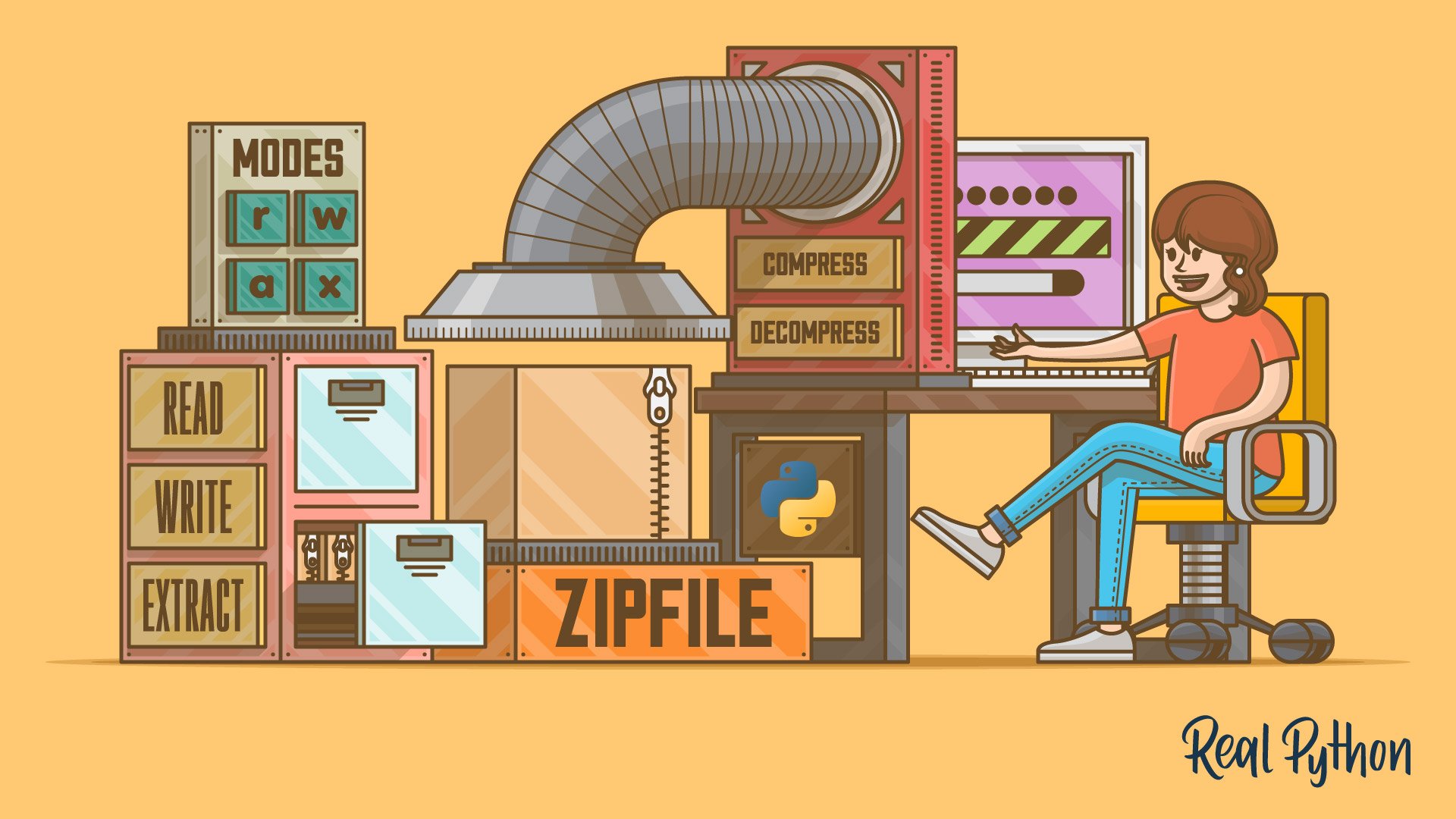Python’s zipfile is a standard-library module intended to manipulate ZIP files. This file format is a widely adopted industry standard when it comes to archiving and compressing digital data. You can use it to package together several related files. It also allows you to reduce the size of your files and save disk space. Most importantly, it facilitates data exchange over computer networks.
Knowing how to create, read, write, populate, extract, and list ZIP files using the zipfile module is a useful skill to have as a Python developer or a DevOps engineer.
In this video course, you’ll learn how to:
- Read, write, and extract files from ZIP files with Python’s
zipfile - Read metadata about the content of ZIP files using
zipfile - Use
zipfileto manipulate member files in existing ZIP files - Create new ZIP files to archive and compress files
If you commonly deal with ZIP files, then this knowledge can help to streamline your workflow to process your files confidently.
To get the most out of this video course, you should know the basics of working with files, using the with statement, handling file system paths with pathlib, and working with classes and object-oriented programming.
If you’d like to learn more about the REPL used in this course, check out Discover bpython: A Python REPL With IDE-Like Features. Note that all the code in this course will also run in the Python standard REPL.
What’s Included:
- 12 Lessons
- Video Subtitles and Full Transcripts
- 2 Downloadable Resources
- Accompanying Text-Based Tutorial
- Q&A With Python Experts: Ask a Question
- Certificate of Completion
Downloadable Resources:
Related Learning Paths:















